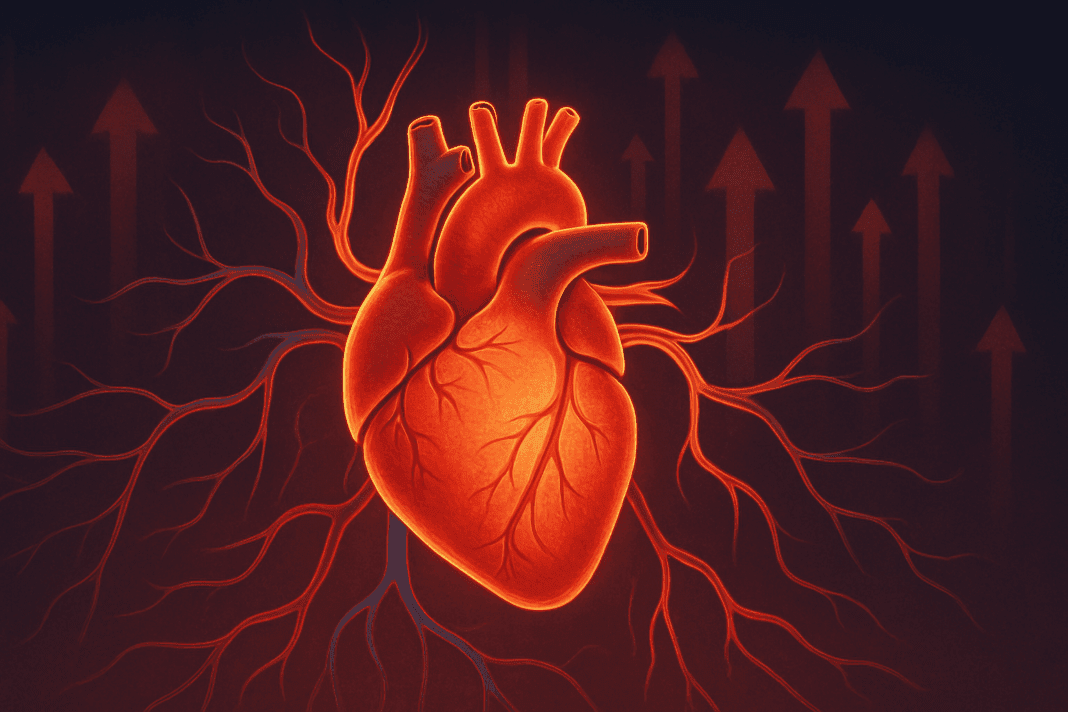In the modern landscape of cardiovascular health, the term “essential hypertension” appears frequently in both clinical settings and public health discussions. For individuals seeking clarity about their cardiovascular risks, understanding what essential hypertension means and how it differs from other types of high blood pressure is critical. This article unpacks the nuances of primary hypertension, explores its root causes, stages, and types, and dives deep into the methods of diagnosis and management. By drawing upon medically accurate, evidence-based information, this discussion serves as a guide for those navigating the complexities of blood pressure conditions while staying aligned with the principles of Experience, Expertise, Authoritativeness, and Trustworthiness (EEAT).
You may also like: Sudden Spikes in Blood Pressure: What Can Cause a Sudden Increase and When to Seek Medical Attention
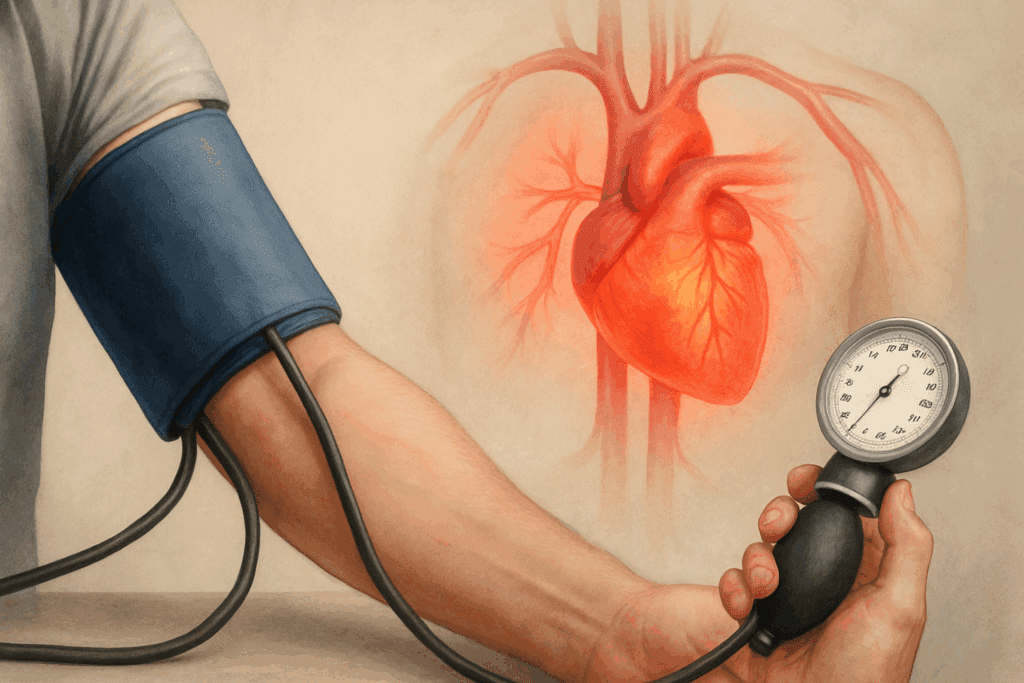
Defining Essential Hypertension and Its Clinical Relevance
Essential hypertension, also referred to as primary hypertension or essential high blood pressure, represents the most common form of elevated blood pressure. Characterized by chronically elevated systolic and/or diastolic blood pressure without a clearly identifiable secondary cause, essential hypertension accounts for approximately 90–95% of all hypertension cases. To define essential hypertension with clinical precision, it is a persistent increase in blood pressure readings above the established normal threshold—typically over 130/80 mm Hg—occurring in the absence of another underlying medical condition.
The essential hypertension definition is not merely academic. In practice, this diagnosis triggers a cascade of lifestyle and pharmacological interventions aimed at mitigating cardiovascular risk. Since essential primary hypertension typically develops gradually over years, many patients may remain unaware of their condition until complications arise. Therefore, public education around what essential blood pressure means is integral to improving long-term outcomes and preventing cardiovascular morbidity.
Understanding the HTN Medical Abbreviation and Related Terminology
In medical documentation, shorthand abbreviations are common and help standardize communication. Among the most widely used terms is the HTN medical abbreviation, which simply stands for hypertension. Similarly, HBP—short for high blood pressure—is another frequently encountered shorthand. When clinicians use the hypertension medical abbreviation in charts, they refer broadly to both primary and secondary forms of elevated blood pressure.
BP, the medical abbreviation for blood pressure, appears universally across healthcare documentation. Accurate comprehension of these abbreviations is crucial for patients trying to understand their diagnosis. Knowing what the abbreviation HTN stands for can empower patients to ask more informed questions during clinical encounters. In the realm of essential HTN, understanding these linguistic conventions enables better communication between providers and patients, facilitating shared decision-making.
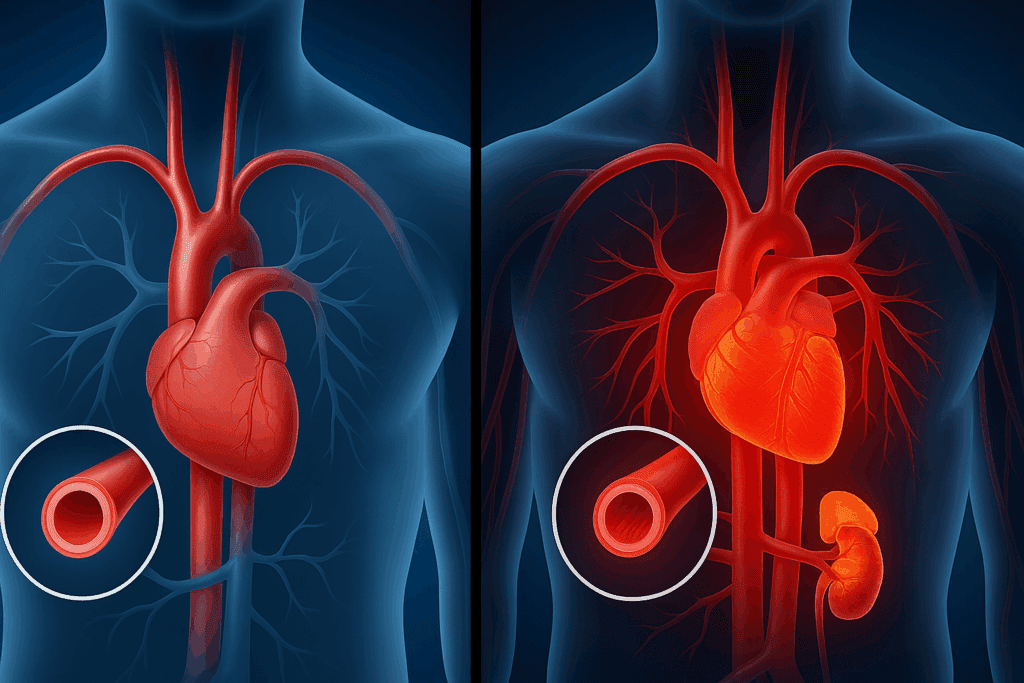
Primary Hypertension vs. Secondary Hypertension: Understanding the Distinction
Distinguishing between primary hypertension and secondary hypertension is foundational in cardiovascular medicine. While primary hypertension develops independently—without a specific, identifiable cause—secondary hypertension arises as a direct result of another medical condition, such as chronic kidney disease, hormonal disorders, or the use of certain medications. This differentiation is critical for determining the appropriate treatment strategy and for understanding long-term prognosis.
When considering the topic of primary hypertension vs. secondary hypertension, clinicians conduct a detailed evaluation that includes patient history, physical examination, and laboratory testing. Understanding secondary vs. primary hypertension can inform the diagnostic process, ensuring that no underlying, treatable cause is missed. While both types of hypertension can lead to serious complications if unmanaged, primary HTN tends to be more insidious, developing over time without triggering obvious symptoms.
What Type of Hypertension Is the Most Common?
Among the various kinds of hypertension, essential hypertension is by far the most prevalent. When asking what type of hypertension is the most common, the answer consistently points to essential or primary hypertension. This dominance is likely due to its multifactorial etiology, which involves a complex interplay between genetic predisposition, environmental influences, and lifestyle factors.
Although mild hypertension, often seen as the early phase of essential HTN, might not produce noticeable symptoms, it still carries risks over time. If left unmonitored or untreated, even this less severe form can progress to more advanced stages, increasing the likelihood of cardiovascular events such as stroke, heart failure, and kidney disease. Therefore, understanding the various types of hypertension, particularly in terms of their frequency and risk profile, is central to effective prevention strategies.

Exploring the Causes and Risk Factors of Essential Primary Hypertension
The etiology of essential primary hypertension remains complex and multifaceted. While no singular cause is identifiable, research has highlighted several contributing risk factors. These include a family history of high blood pressure, advancing age, obesity, high sodium intake, physical inactivity, stress, and excessive alcohol consumption. Understanding what the main cause of essential hypertension is requires consideration of both genetic and environmental components.
In most individuals, essential HTN emerges gradually over time. The vascular system stiffens with age, the kidneys lose some of their regulatory capacity, and the hormonal systems that influence blood pressure—such as the renin-angiotensin-aldosterone system—can become dysregulated. These biological changes, compounded by modifiable lifestyle factors, contribute to the insidious onset of this condition. Acknowledging these variables is essential for both prevention and targeted intervention.
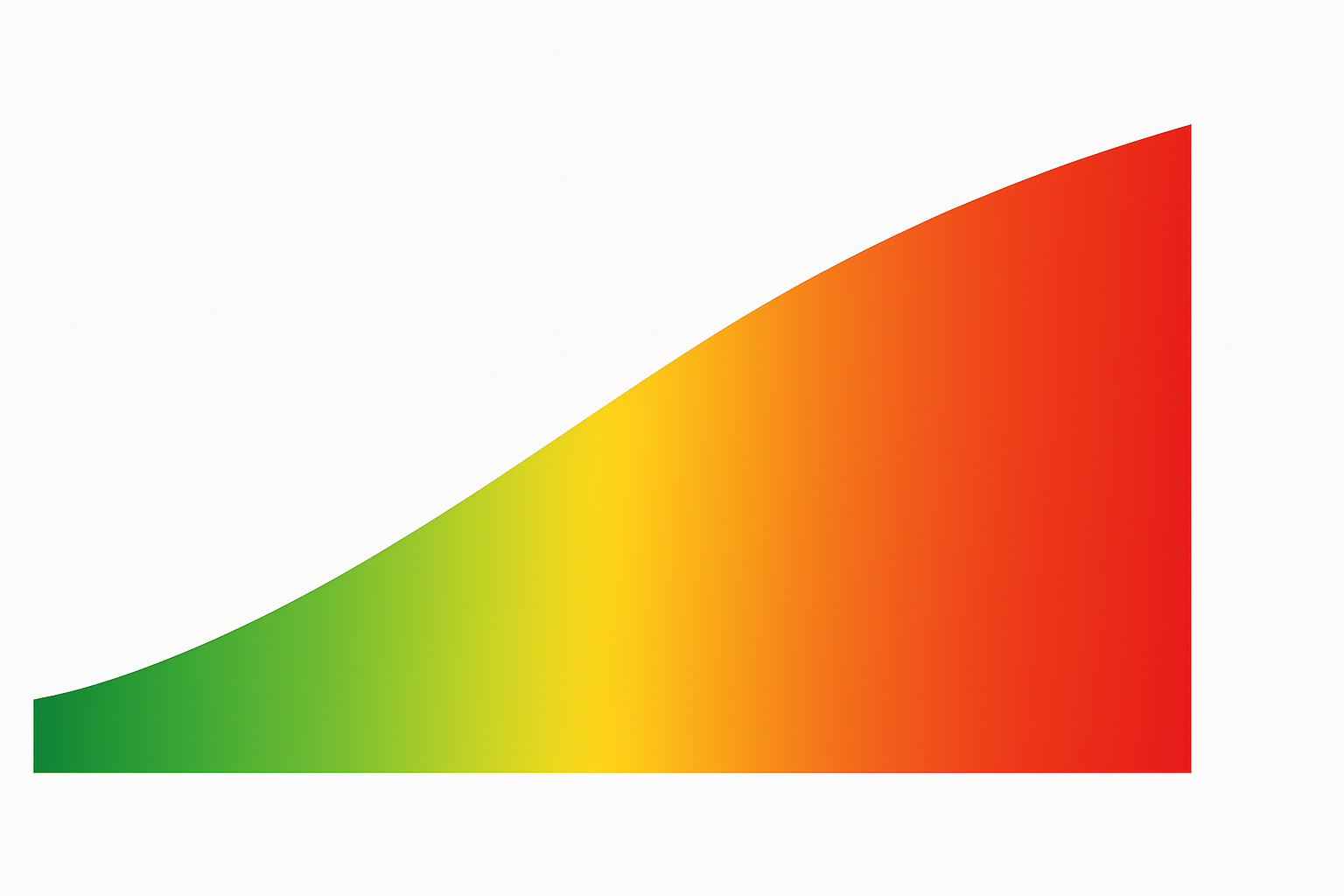
What Is Staging and Grading for High Blood Pressure?
The staging and grading of high blood pressure help clinicians assess severity and guide treatment decisions. In clinical practice, staging is typically based on systolic and diastolic blood pressure readings. The standard categories include elevated blood pressure, Stage 1 hypertension, Stage 2 hypertension, and Stage 3 hypertension. Knowing what staging and grading for high blood pressure entails allows patients and providers to have a shared understanding of cardiovascular risk.
Stage 3 HTN, or stage 3 hypertension, represents the most severe classification, generally marked by a systolic pressure over 180 mm Hg or a diastolic pressure above 120 mm Hg. At this level, immediate medical attention is often necessary due to the heightened risk of organ damage. Understanding the implications of each stage underscores the importance of early detection and intervention, particularly in cases that begin as mild hypertension but worsen over time.
How Is High Blood Pressure Diagnosed?
To answer the question, “how is high blood pressure diagnosed?”, one must consider both clinical standards and individualized patient assessment. The diagnostic process typically begins with repeated blood pressure measurements taken in a calm, controlled setting using validated equipment. A diagnosis of hypertension is generally confirmed when a patient records consistent readings above the threshold of 130/80 mm Hg across multiple visits.
However, a single elevated reading does not automatically indicate a chronic condition. White coat hypertension—where a patient’s blood pressure spikes in clinical settings—can lead to false positives. To mitigate this, ambulatory or home blood pressure monitoring may be employed. Accurate diagnosis is critical, as it dictates whether the patient has essential primary hypertension or a different form, and determines which therapeutic interventions are appropriate.
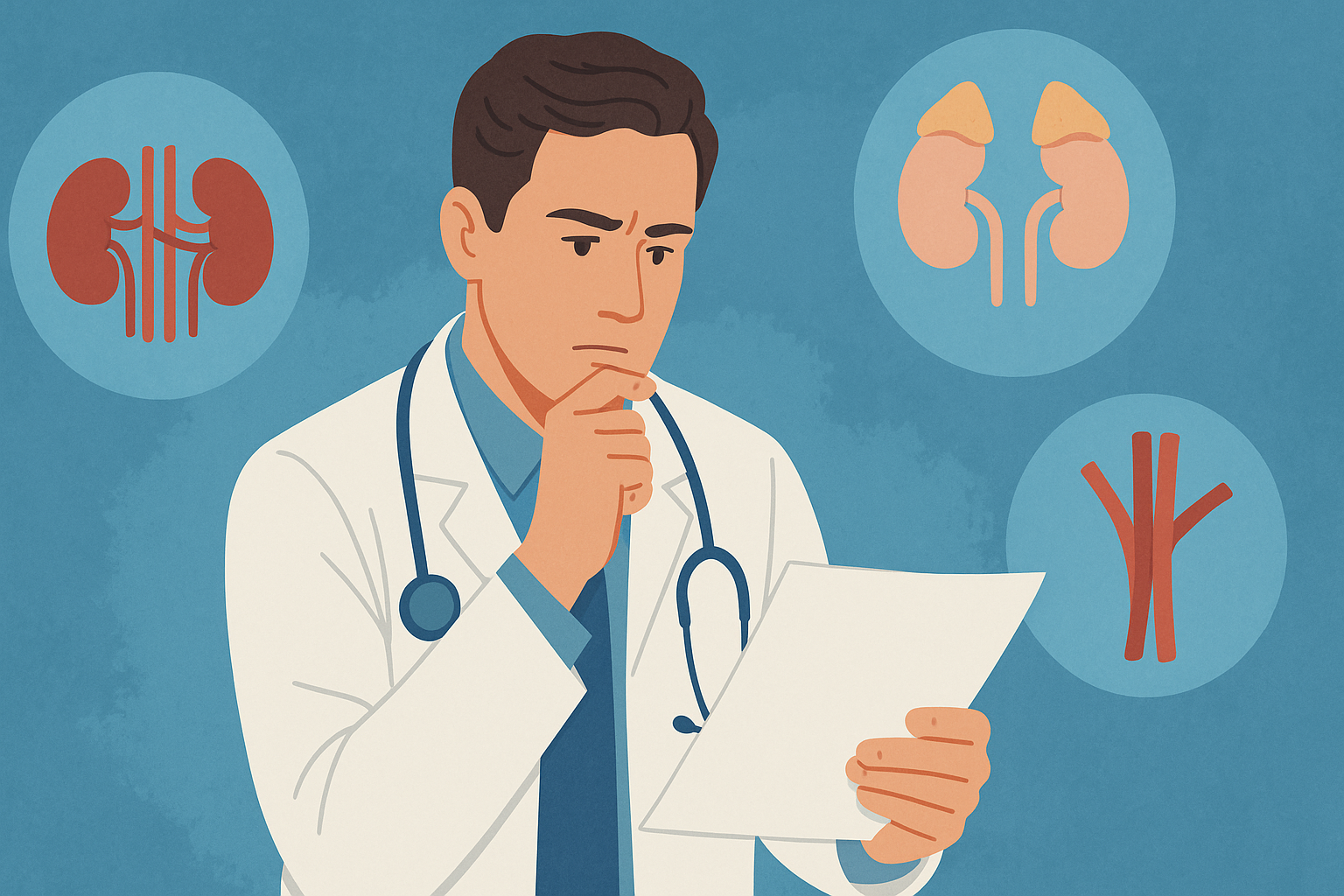
Differential Diagnosis of High Blood Pressure: Exploring Alternative Causes
High blood pressure may stem from a wide range of physiological disruptions. Conducting a differential diagnosis for high blood pressure ensures that secondary causes are not overlooked. These might include renal artery stenosis, primary aldosteronism, pheochromocytoma, Cushing’s syndrome, and even medication-induced hypertension. Each of these conditions can elevate blood pressure readings but requires a distinct diagnostic and therapeutic approach.
Understanding the nuances of the differential diagnosis high blood pressure workup is essential for clinicians, particularly in patients who are young, present with severe hypertension, or fail to respond to standard treatments. In such cases, identifying whether the hypertension is primary or secondary can be life-saving. For patients, this underscores the value of comprehensive diagnostic assessments rather than relying solely on initial blood pressure readings.
Defining Mild Hypertension and Early Warning Signs
Mild hypertension, while often dismissed as relatively harmless, is a significant clinical finding. Typically defined as blood pressure readings in the range of 130–139 mm Hg systolic or 80–89 mm Hg diastolic, this early stage signals the beginning of vascular strain. While symptoms are usually absent, the cumulative effect of mild hypertension can lead to progressive vascular damage if left unchecked.
Patients diagnosed with mild hypertension are often advised to adopt lifestyle modifications as a first line of defense. These may include dietary changes, increased physical activity, weight loss, and stress reduction. Identifying and addressing mild hypertension early on is crucial for preventing progression to more severe stages, such as stage 3 HTN. It also provides a window of opportunity to implement sustainable, non-pharmacologic interventions.

Clarifying What Essential Hypertension Means for Long-Term Health
So, what does essential hypertension mean in the broader context of health? Beyond a numeric elevation in blood pressure readings, it symbolizes a persistent strain on the vascular system, increasing the risk of cardiovascular complications over time. Left unmanaged, essential hypertension can contribute to the development of heart disease, stroke, kidney failure, and vision problems.
Yet, this condition is highly manageable with appropriate intervention. Lifestyle changes, regular monitoring, and in some cases, pharmacologic therapy can all significantly reduce associated risks. The key lies in consistent care, patient education, and an individualized approach to treatment. Understanding what essential hypertension means equips both patients and healthcare providers to work collaboratively toward improved health outcomes.
Frequently Asked Questions (FAQ): Understanding Essential Hypertension and Related Topics
What lifestyle changes are most effective for managing mild hypertension before medication becomes necessary?
For individuals with mild hypertension, early intervention through lifestyle changes can be highly effective in delaying or even preventing the need for medication. Emphasizing a diet low in sodium and rich in potassium, such as the DASH (Dietary Approaches to Stop Hypertension) diet, is particularly beneficial. Regular aerobic exercise—such as brisk walking or swimming for 30 minutes most days of the week—has been shown to improve blood pressure regulation. In addition, managing stress through techniques like meditation, cognitive-behavioral therapy, or yoga can provide significant cardiovascular benefits. Addressing mild hypertension through these methods may halt its progression to stage 3 hypertension, highlighting the importance of early, proactive care.
How does the use of medical abbreviations like HTN and BP affect patient communication and health literacy?
While the HTN medical abbreviation and BP medical abbreviation are efficient for clinical documentation, they can pose a barrier for patients unfamiliar with medical shorthand. Improved patient outcomes often rely on clear communication, and clinicians should be mindful to explain that HTN stands for hypertension and BP refers to blood pressure. Enhanced understanding of the hypertension medical abbreviation helps patients feel more confident when reviewing their own health records or discussing results. In healthcare settings focused on shared decision-making, minimizing jargon can help bridge the gap between clinical language and patient comprehension. This approach fosters better engagement, especially in long-term conditions like essential hypertension.
Are there genetic markers that increase the likelihood of developing essential hypertension?
Yes, research has identified several genetic markers associated with an increased risk of developing essential primary hypertension. Variants affecting the renin-angiotensin-aldosterone system, sodium transport, and vascular tone have been found to influence blood pressure regulation. Although genetics alone rarely determine outcomes, understanding a family history of essential HTN allows for early screening and intervention. Gene-environment interactions—such as how dietary salt affects people with certain genetic profiles—are a major focus of current studies. As research advances, we may see more personalized strategies to prevent or treat essential high blood pressure based on an individual’s genetic makeup.
What are the most emerging diagnostic tools for evaluating primary hypertension vs secondary hypertension?
Distinguishing primary hypertension vs secondary hypertension is increasingly supported by advanced diagnostics. For primary HTN, ambulatory blood pressure monitoring (ABPM) is becoming the gold standard, offering a more accurate picture than in-office readings alone. When evaluating for secondary causes, tools like renal Doppler ultrasounds, plasma aldosterone-renin ratio testing, and adrenal imaging are routinely used. These techniques help narrow down the secondary vs primary hypertension differential, especially in cases that do not respond to standard treatments. The development of biomarker panels may soon offer clinicians non-invasive ways to define primary hypertension and distinguish it from secondary forms with greater precision.
How can psychological and social stress contribute to essential hypertension development?
Chronic psychological stress is a well-documented contributor to essential hypertension, especially in individuals predisposed to cardiovascular issues. Stress can elevate cortisol and adrenaline levels, leading to vasoconstriction and sustained high blood pressure. Over time, these physiological changes may transition into essential high blood pressure, particularly when combined with other lifestyle risk factors like poor diet or physical inactivity. Social stressors, including financial insecurity or workplace burnout, can also amplify this risk. Addressing these root causes is essential in the management of essential primary hypertension and underscores the importance of mental health as a component of cardiovascular care.
Can wearable technology help detect early stages of hypertension, such as mild hypertension?
Wearable technology, including smartwatches and fitness trackers equipped with optical sensors, has emerged as a promising tool for detecting early signs of mild hypertension. While these devices do not replace clinical-grade sphygmomanometers, they offer continuous monitoring and can alert users to trends indicating rising blood pressure levels. This real-time feedback may prompt users to seek medical evaluation sooner, thereby improving early detection rates. As algorithms become more sophisticated, wearables could play a larger role in how high blood pressure is diagnosed outside of traditional settings. This is particularly useful for spotting cases of essential hypertension that progress gradually and without symptoms.
How does understanding what staging and grading for high blood pressure means influence patient adherence to treatment?
Understanding what staging and grading for high blood pressure means can significantly improve patient adherence to both lifestyle changes and medication regimens. When patients learn that progressing from mild hypertension to stage 3 HTN dramatically increases their risk of stroke or heart failure, they are more likely to take preventive action. Clear explanations of how the various types of hypertension correlate with treatment urgency and long-term risk make the condition more tangible. Educational tools that visualize stages—such as graphs or digital dashboards—can reinforce these messages in clinical settings. The better patients grasp the implications of each stage, the more likely they are to commit to sustainable management strategies.
What advancements are being made in the pharmacological treatment of essential hypertension?
Pharmacological treatment for essential hypertension continues to evolve with a focus on minimizing side effects and improving long-term compliance. Newer combination therapies that pair calcium channel blockers with ACE inhibitors or ARBs (angiotensin receptor blockers) in a single pill simplify daily regimens. Additionally, research into renal denervation—a minimally invasive procedure designed to reduce sympathetic nerve activity—is showing promise as an adjunct or alternative treatment. Understanding what the main cause of essential hypertension is helps guide future drug development aimed at targeting the root mechanisms rather than just symptoms. These innovations provide hope for patients whose essential HTN proves resistant to conventional treatment.
How does occupational exposure influence the development of different types of hypertension?
Occupational factors play a critical but often overlooked role in the development of various types of hypertension. Shift work, for example, has been linked to disruptions in circadian rhythm and increased risk for both mild hypertension and essential hypertension. Jobs involving chronic noise exposure, chemical handling, or high physical demand may also contribute to elevated BP, particularly if workers lack access to preventive healthcare. Studies exploring different kinds of hypertension are now investigating environmental and occupational exposures as unique risk domains. Policies aimed at improving workplace ergonomics and access to blood pressure screenings can serve as early interventions in preventing stage 3 hypertension.
Why is it important to clarify the term ‘what is essential blood pressure’ in patient education?
The phrase “what is essential blood pressure” often confuses patients who may interpret it to mean a type of necessary or beneficial pressure. In reality, it refers to essential hypertension, a chronic condition that requires management to avoid complications. Clarifying this term during patient education reduces misunderstanding and reinforces the seriousness of the diagnosis. It also provides a foundation for explaining the essential hypertension definition and how it differs from other conditions, including secondary hypertension. Accurate, clear language empowers patients to take a more active role in managing their health and understanding the full spectrum of the primary hypertension vs secondary hypertension discussion.
Conclusion: Understanding Essential Hypertension and Its Role in Cardiovascular Risk
In conclusion, essential hypertension—also known as primary hypertension or essential high blood pressure—plays a foundational role in the landscape of cardiovascular disorders. Through a careful examination of what essential hypertension means, including its causes, staging, diagnosis, and long-term implications, individuals are better positioned to take control of their health. This article has unpacked the intricacies of the condition while ensuring accurate and natural integration of essential keyword phrases such as mild hypertension, HTN medical abbreviation, and primary vs. secondary HTN.
Understanding the types of hypertension and being able to define primary hypertension accurately empowers patients to engage actively in their care. Recognizing the differential diagnosis high blood pressure process helps rule out more serious secondary causes. Equally important is grasping how to diagnose hypertension properly, particularly in its early stages such as mild hypertension or stage 1, before it escalates to stage 3 HTN.
By exploring essential hypertension definition and what is essential blood pressure from a medically grounded and SEO-optimized perspective, this article serves not only as a resource for clinicians but also as an accessible educational tool for health-conscious readers. With a commitment to the EEAT principles of Experience, Expertise, Authoritativeness, and Trustworthiness, we aim to foster greater awareness and encourage proactive cardiovascular care for all.
Was this article helpful? Don’t let it stop with you. Share it right now with someone who needs to see it—whether it’s a friend, a colleague, or your whole network. And if staying ahead on this topic matters to you, subscribe to this publication for the most up-to-date information. You’ll get the latest insights delivered straight to you—no searching, no missing out.
Further Reading:
Primary Hypertension (Formerly Known as Essential Hypertension)


